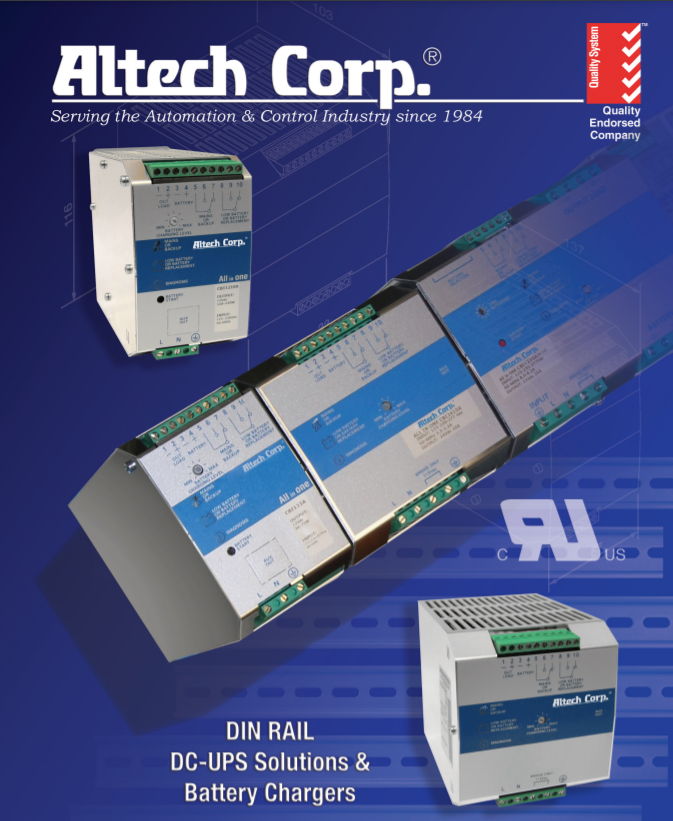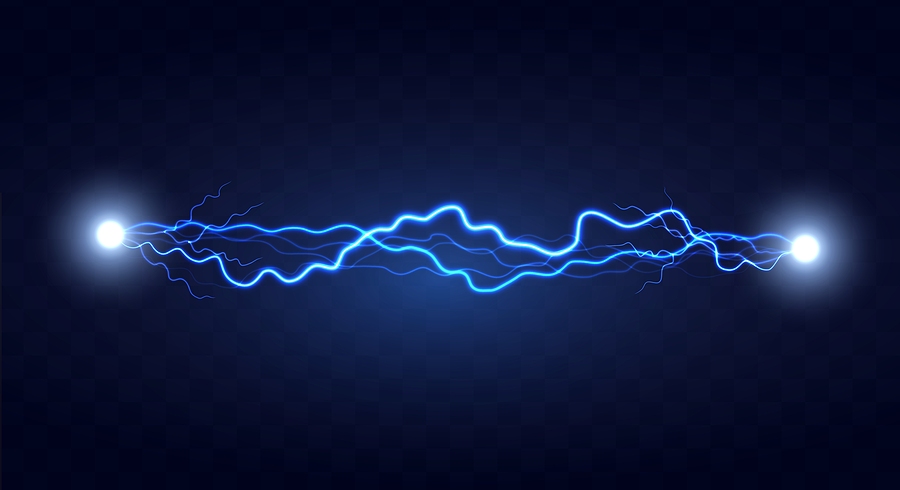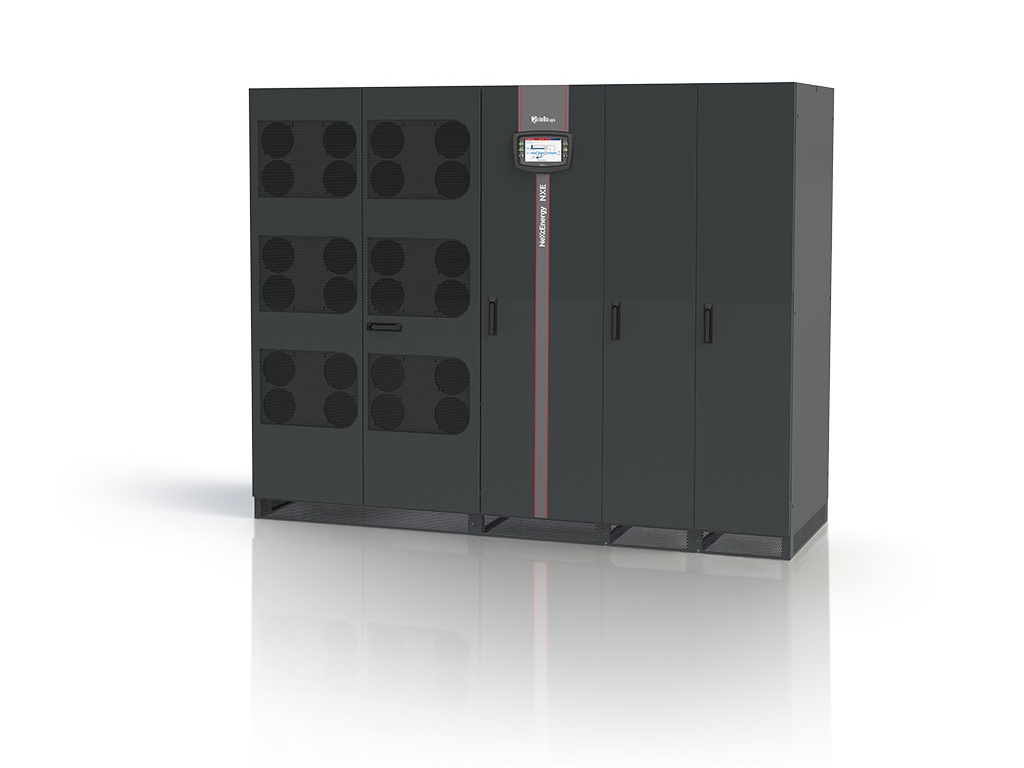UPS & Power Distribution
UPS & Power Distribution
How data centres will support renewable power adoption
By Janne Paananen, Technology Manager, Critical Power Systems, Eaton
Data centres are central to almost everything in people’s increasingly digitally led lives. From managing the transportation we rely on, powering the supply chains that keep our supermarkets stocked, and communicating with our colleagues and loved ones, all is being made simpler, faster, and more efficient by data centre connectivity. This connectivity underpins our digital, social, and professional infrastructures, and as we saw with the COVID-19 pandemic, is robust in even the most challenging of circumstances.
The increasing amount of work being done in data centres also means they are demanding more power than ever. A Swedish study on the global usage of electricity found that data centres and the networks associated with them may lead to information and communications technology (ICT) requiring even up to 21% of our total electricity production by 2030.
While data centre-based solutions may often be more energy
efficient than the processes they replace, this growth is still a problem in
the context of our urgent need to decarbonise power production to meet climate
targets. As a result, there is an ongoing global effort to make data centres
greener, doing more work with fewer emissions, and it becomes possible to
foresee a world where digital energy demand can be met entirely by renewables,
something that many ICT companies are aiming for. Investments into renewable
energy and supporting technology have been promoted using industry leading
environmental and sustainability targets.
The challenge of renewables
Renewable energy sources bring green electrical energy, but
they also bring other issues and engineering challenges. While some renewable
energy sources offer predictable production (hydro), we are in fact moving
towards a grid dominated by wind and solar. These variable renewable energy
(VRE) sources, by nature, fluctuate in their output.
It’s easy to see how this leads to potential problems. An
electrical grid system must constantly match consumption with electricity
production. This is fundamental to grid and frequency stability. But if VRE has
fluctuating output, periods of over- and under-supply seem inevitable.
Also, as VRE is replacing traditional turbine generators, it
reduces system inertia i.e. stored energy in rotating mass resulting in faster
and larger frequency deviations when mismatches between production and
consumption occur.
Grid operators are developing ways to manage that potential
mismatch. But consumers can help too. Consumer on-site electrical systems,
especially back up power systems, can actually help in grid stabilisation and
therefore will enable the successful adoption of renewables on the grid. This
help comes in the form of ancillary services that can be delivered ‘back’ to
the grid operator.
Rethinking the data centre
On the one hand, we have an increasingly digitalised world
requiring more and more power. On the other, we are seeing an enthusiastic
uptake of renewable energy which, if we maintain that momentum, will require
innovations in how we maintain security of supply.
When thinking about how to build this future, it’s important
to remember that these are not independent problems, and that the changes we’re
heading towards should be more than a replacement of existing systems; as we
transform power systems and digitalise everything from manufacturing to
healthcare, we have an opportunity – and responsibility – to not just keep the
lights on, but to rethink everything about how these essential services work.
Data centres, of course, cannot afford power instability: by
necessity, they are ‘always-on’.
The services we all rely on need data centres with near-constant
uptime. To ensure continuous power, data centres are outfitted with
uninterruptible power supplies (UPSs) with batteries and backup generators
which step in to keep everything running when grid supply fails.
A UPS needs to respond instantly to changes in supply,
deliver large amounts of power, and do so with the utmost reliability. In other
words, the qualities they need in order to support stable data centre operation
also make them perfect for providing ancillary services to the grid, such as
quickly adjusting its demand from the grid or feeding in energy. These fast
actions can stabilise a grid and contain grid frequency.
Making this a reality requires some work: a data centre UPS will need to be aware of how the grid is operating, while the grid will need to be ready to receive supply from data centres as well as deliver power to them. Eaton’s recent research with Microsoft demonstrates that building the systems to make it work is possible and how data centres can support the grid in real-world testing. As an example, Eaton’s headquarters in Dublin is now home to a new UPS that successfully provides fast frequency response services to the local grid by reducing the building’s demand when grid frequency drops.
This potential shift in how we use our data centre
capabilities will mean a complete rethink of the role of power consumers on the
grid. Before, electricity transmission was a one-way street from production to
consumption; now, we are seeing how it can be bidirectional and interactive,
and everyone has their roles to play, from grid operators to consumers. Before,
a system like a UPS was an operational necessity and a necessary expense, now
we are seeing how it can be a source of revenue when ancillary services are
sold back to the grid operator.
As for data centres, we are seeing how their centrality to
modern life is more than just digital services. As they begin supporting the
renewable energy grid, we may start to see them not just as data centres, but
as energy centres helping to decarbonise electricity and creating a digital and
sustainable future for all.
Carly Weller - 4 January 2022
UPS & Power Distribution
Allied offers Altech cutting-edge power protection solution
With power grid infrastructure modernisation years away, companies need uninterrupted, reliable power solutions to protect and maintain operations and assets during weather-related events and unexpected outages. For many companies, Altech's CBI All-in-One DC Uninterruptable Power Supply (UPS) is an ideal solution. Allied Electronics & Automation is proud to now offer this complete battery charging, management, and monitoring system.
"We developed the CBI DC UPS system because we realised many companies still depend on outdated battery back-ups and generators to keep the power on, and frankly, they just aren't up to the task anymore," explains Laszlo Gyorgypal, Product Manager at Altech. "To solve that problem, we designed battery-related technology that's able to address modern emergency power requirements."
The result of Altech's efforts is a unique multi-purpose device, an all-in-one power solution that seamlessly combines four key capabilities: AC/DC power supply unit, battery charger, battery care module, and backup module. In addition, the CBI UPS' power distribution and management capabilities are hard to match:
Available power is automatically distributed among load and battery, supplying power to the load as the first priority.If the device is disconnected from the main power source, the battery supplies the load until the battery voltage reaches 1.5V per cell to prevent deep discharge of the battery.A microprocessor controls battery charging by determining the battery condition and selecting the appropriate charging mode.A real-time diagnostics system continuously monitors the charging process and flags potential faults such as short circuits, reverse polarity connection, and battery disconnection.
The CBI DC UPS's main features are equally impressive and include:
Space-saving all-in-one systemUniversal input voltage range: 110VAC, 230VAC or 277VACOutput voltages of 12V, 24V and 48V DC with current rating up to 35AWide temperature range: -30°C to 70°CRugged metal case with DIN rail mountUL certification for all versionsSelectable charging curves for a variety of battery chemistries
"It's hard to overstate the impact the CBI UPS can have on a company's ability to operate and remain productive during an extended power outage," says Laszlo. "Old-school batteries and generators simply can't compare to the multi-stage smart-battery capabilities of the CBI system. It's a night and day difference for industrial applications."
Multiple configurations of Altech's CBI UPS system are available at Allied. As an authorised distributor for Altech and many other brands, Allied helps engineers, plant managers, and other purchasers quickly find the products they need.
Beatrice - 4 January 2022
UPS & Power Distribution
Key attributes of sustainable UPS and critical power systems
By Marc Garner, VP Secure Power Division, Schneider Electric, UK & Ireland
One of the greatest challenges faced by today’s data centre operators is the need to meet demands for reliability with minimal impact on the environment. Data centres are estimated to represent between 1-2% of global electricity consumption and when combined with the continued growth of data centre capacity, efficiency and sustainability have become more critical than ever. In fact, a survey by Schneider Electric and 451 Research found that 97% of colocation customers are demanding contractual commitments to sustainability, and of the +800 global businesses surveyed, more than half believe that efficiency and sustainability will be important competitive differentiators within three years.
In recent years, data centre operators have come under increasing pressure to make their facilities more efficient, resilient, and sustainable. A growing awareness of the impacts of climate change, combined with end-user demands for sustainability, has seen a number of transformative initiatives take place within the sector, including the emergence of the Climate Neutral Data Centre Pact. However, as sustainability demands continue to gather pace and become a key factor of both differentiation and decision making, how can an industry built on reliability, meet demands for resiliency and sustainable operations?
A balancing act
According to the Uptime
Institute, "power remains the leading cause of outages," so it
pays to invest in technologies that can balance the need to be
environmentally-conscious and risk averse. Uptime and uninterruptible power are,
in many respects, business-critical, and for data centre operators, a
sustainable backup power system can offer a resilient solution to safeguard
against downtime and meet environmental demands.
One key attribute of a sustainable
uninterruptible power supply (UPS) is its operating mode, which can boost the
efficiency, or reduce the energy usage, without compromising on the level of
redundancy. Advanced eco modes such as Schneider Electric’s patented
ECOnversion technology, offers UPS efficiencies of up to 99% without
sacrificing load protection alongside pioneering safety features, including
Live Swap functions, which ensure unscheduled downtime is kept to a minimum
during the maintenance process.
Battery technologies
UPS batteries and the associated number of
charge or discharge cycles is another important sustainability attribute,
especially if an organisation is looking to reduce its energy usage and
emissions over the lifecycle. UPS systems that offer two to three times the
life expectancy of traditional systems, such as those powered by Lithium-Ion
(li-ion), can offer users significant benefits, including a 30%-50% lower total
cost of ownership (TCO) and reduced carbon emissions.
Li-ion powered solutions can also have a 50-75% smaller physical footprint compared
with valve-regulated lead-acid (VRLA) batteries, thereby enabling the user to
right size for the load and scale up according to power demands. This reduces
the need for redundant infrastructure and wasted energy, meaning users can
provision now and plan sustainably, for the future.
Circularity attributes
Another sustainability consideration is the circularity attribute of an uninterruptible power supply. Products labelled as Green Premium can ensure vendors are crystal clear about the sustainability impact of their hardware systems, and help end-users to gain a greater understanding of the technologies embodied carbon footprint. Such aspects might include transparent environmental information about products, minimal use of hazardous substances and compliance with regulations such a Restriction of Hazardous Substances (RoHS) and the European Union (EU) Registration, Evaluation, Authorisation, and Restriction of Chemicals (REACH). Further, environmental disclosures such as a Product Environmental Profile (PEP) or circularity profiles can provide owners and operators with guidance on responsible product end of life treatments along with circular value propositions.
A reduction in harmful materials
Switchgear is another key attribute of a resilient power system and in recent years, many changes have been made to reduce its environmental impact. Until recently, sulphur hexafluoride (SF6) had long been used within high and medium voltage switchgear as an insulating and circuit-breaking medium, offering the advantages of being extremely effective and low cost. However, its one big disadvantage is that it is a Greenhouse Gas (GHG) and is 23,500 times more harmful than CO2. As such it is quickly being replaced by newer and more innovative switchgear technologies. These new systems combine pure air insulation, vacuum technology with innovative Shunt Vacuum Interruption to deliver industry-leading circuit-breaking performance with zero GHG emissions.
Medium voltage switchgear systems
incorporating these advanced sustainability improvements can deliver a proven
solution for safer network management, while avoiding the use of GHGs, and
eliminating the risks associated with leaks or toxic by-products. Furthermore,
many of the anticipated cost efficiencies have already been addressed, which
helps to support greater adoption of sustainable equipment in live and
mission-critical environments.
Today, meeting the need for needs for
sustainable and resilient critical power systems is paramount. Yet, by
carefully considering the type of technologies deployed, their energy
efficiency and circular attributes, today’s data centre operators have the
means to ensure operational continuity, while minimising their impact on the
environment.
Carly Weller - 4 January 2022
UPS & Power Distribution
Power distribution market to reach $7.9 billion by 2030: says AMR
According to the report published by Allied Market Research, the global power distribution unit market was estimated at $4.1 billion in 2020 and is expected to hit $7.9 billion by 2030, registering a CAGR of 6.9% from 2021 to 2030. The report provides an in-depth analysis of the top investment pockets, top winning strategies, drivers and opportunities, market size and estimations, competitive scenario, and varying market trends.
Rise in demand for stable power and increase in focus toward reducing energy losses drive the growth of the power distribution unit market. On the other hand, space constraint and complex wiring systems with increasing number of power distribution units restrain the growth to some extent. However, surge in number of data centres across the globe is projected to create lucrative opportunities in the industry.
COVID-19 scenario
During the pandemic, the trend of work-from-home has been highly effective for non-manufacturing sectors, which in turn gave way to utilisation of more spaces in data centres. This factor augmented the demand for power distribution units.
However, dearth of raw materials hampered the production rate of power distribution unit, thereby giving a mixed impact to the global power distribution unit market.
The global power distribution unit market is analysed across type, phase, end-user industry, and region.
Based on type, the metered PDU segment accounted for more than one-fourth of the total market share in 2020, and is expected to rule the roost by 2030. The monitored PDU segment, however, would garner the fastest CAGR of 7.4% throughout the forecast period.
Based on phase, the three segment contributed to nearly three-fifths of the total market revenue in 2020, and is projected to lead the trail by 2030. The same segment would also exhibit the fastest CAGR of 7.0% during the forecast period.
Based on region, the market across North America held the major share in 2020, garnering around two-fifths of the global market. Asia-Pacific, on the other hand, would manifest the fastest CAGR of 9.2% throughout the forecast period.
The key market players analysed in the global power distribution unit market report include Siemon, Leviton, Siemens, Nvent, Powertek, Eaton, Schneider, Raritan, and Vertiv group. These market players have adhered to several strategies including partnership, expansion, collaboration, joint ventures, and others to prove their flair in the industry.
Beatrice - 4 January 2022
Infrastructure
Power & Cooling
UPS & Power Distribution
Riello UPS boosts NextEnergy range with 800 kVA version
Riello UPS expands its super-efficient NextEnergy (NXE) series with a new 800 kVA model.
The NXE 800 is designed to protect larger data centres, including hyperscale or colocation facilities, and can power parallel installations up to a massive 6.4 MVA.
It joins the already popular 250-300-400-500-600 kVA NextEnergy models and is manufactured using the same sophisticated transformer-free technologies that deliver unity power (kW = kVA) and TÜV-certified operational efficiency up to 97% in double-conversion online UPS mode.
With front to top ventilation and full front access for maintenance eliminating the need for rear clearance, NextEnergy offers data centre operators the broadest range of installation options (i.e. against the wall, side-to-side, back-to-back). It also works with or without a neutral connection, reducing distribution costs for facilities that don’t require a neutral line.
As with the rest of the NextEnergy range, the new NXE 800 incorporates a host of energy saving features that help to minimise power consumption and reduce running costs.
These include an operating mode called Active ECO, which ensures enhanced efficiency of 98.5% by powering the load using the bypass line whilst still filtering harmonics on the mains without requiring any power factor correction.
In addition, there’s an Efficiency Control System that optimises power consumption at low loads in parallel installations. It automatically places some UPSs into standby and shares the workload amongst the rest, ensuring the system runs at the highest possible efficiency.
Leo Craig, Managing Director of Riello UPS, comments: “With this addition of the NXE 800, the NextEnergy range caters for data centres of all sizes, from smaller server rooms right the way through to hyperscale or colocation facilities.”
The NextEnergy series is also compatible with lithium-ion batteries and supercapacitors as alternative energy storage options. In addition, it offers a choice of three peak shaving options: static (pre-programmed at commissioning stage); remote controlled (by the user/operator); and dynamic (adjusts in real-time according to site conditions).
Featuring a large 7-inch colour LCD touchscreen display panel for advanced communications, the NXE range easily integrates with all the main DCIM and remote monitoring software.
Carly Weller - 5 November 2021

Head office & Accounts:
Suite 14, 6-8 Revenge Road, Lordswood
Kent ME5 8UD
T: +44 (0)1634 673163
F: +44 (0)1634 673173




